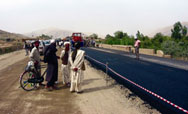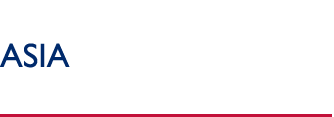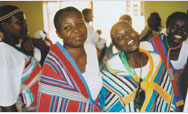 |
 
Contacts
Assistant Administrator
Vacant
Deputy Assistant Administrator
Margot Ellis
Press Inquiries
U.S. Agency for International Development
Office of Press Relations
Ronald Reagan Building
Washington, D.C.
20523-0016
Tel: 202-712-4320
Fax: 202-216-3524
Public
Inquiries
USAID
Missions
Asia
Overview
USAID operates in 22 countries in Asia, from Kazakhstan in the west and north to Papua New Guinea in the east and south. In recent years, this vast and diverse region has experienced vibrant economic growth and significant advances in poverty reduction. Today, many countries in Asia are well on their way to becoming developed economies; others, meanwhile, struggle to provide basic services and opportunities to their citizens.
Challenges
Ensuring that economic growth is equitable and sustainable remains a challenge throughout Asia. Despite its strong economic growth, the Asia region is home to approximately two-thirds of the world's poor. While literacy rates have improved in the region overall, a large gender gap remains, particularly in South Asia, where literacy and enrollment rates for girls remain low. Rapid industrialization associated with economic growth is straining the region's environmental systems. Urban air pollution levels in the region are among the highest in the world, and the consumption of natural resources is occurring at an unsustainable rate.
Countries in Asia also face unpredictable challenges in the areas of health, natural disasters, and conflict. In Asia, as in many parts of the world, HIV/AIDS is destroying communities and bankrupting social systems. In addition, health systems in the Asia region struggle with the growing global threats of avian influenza, tuberculosis and malaria. Frequent natural disasters,such as the 2004 Indian Ocean tsunami and the 2005 earthquake in Pakistan,strain the region's already limited resources. In addition, isolated but ongoing conflicts continue to jeopardize peace, stability and development in the region.
Finally, although respect for political rights and civil liberties has improved in the region overall since 1990, many countries in Asia continue to restrict these rights. Weak governance in parts of Asia contributes to instability that feeds extremism.
USAID's Response
USAID responds to these challenges with innovative programming that emphasizes economic growth, poverty alleviation, education, health, disaster preparedness and democracy to create a more secure, democratic and prosperous region.
USAID's work in the Asia region includes:
- Protecting our vital regional interests by strengthening ties with countries that share our democratic values and building upon successful counterterrorism programs.
- Promoting freedom, democracy, and human rights by, among other things, supporting democratic institutions in Afghanistan and Pakistan; nurturing civil society in the Central Asian Republics; and pressing for the transition to a democratic government in Burma.
- Expanding trade and investment by fostering development where reducing poverty is key to peace and security; improving the business climate and economic competitiveness; promoting transparency and fighting corruption; protecting intellectual property; supporting poverty reduction; and promoting sustained economic growth.
- Developing regional institutions such as ASEAN and APEC, through multilateral cooperation.
- Promoting sound environmental conservation and energy practices.
- Improving quality of life by educating people and combating infectious diseases.
Each country program in the region is guided by a multi-year strategic plan that identifies the sectors in which USAID will work and estimated levels of funding. The Asia Bureau and field offices work in close partnership with U.S. and local non-governmental organizations, private businesses, universities, international organizations and the governments of host countries to achieve long-lasting results. In 2008, the Asia Bureau is managing over $3.7 billion in U.S. assistance across the region.
USAID Success Stories in Asia
- Democracy and Governance: In Afghanistan's 2005 national and local elections, 74 women were elected to the national legislature, and Bamiyan Province elected a female governor.
- Disaster Response: Following the 2004 Indian Ocean tsunami, USAID leveraged more than $18.1 million in private sector funds through 20 public-private partnerships to help rebuild communities, develop livelihoods, promote sustainable timber and build vocational skills. Partners included Chevron, Coca-Cola, Microsoft and World Wildlife Fund.
- Economic Growth: In Central Asia, USAID programs work on ensuring increased access of businesses to market information and reducing trade barriers relating to transport, transit, border crossing and customs clearance.
- Education: In USAID-supported public schools in Pakistan, student enrollment increased by 15.5 percent since 2002, benefiting over 400,000 children.
- Environment: With USAID support, East and Southeast Asia increased their total environmentally protected areas by nearly 68 percent. South Asia increased its protected areas by 184 percent.
- Health and Population: In Indonesia, USAID programs have helped create surveillance and response teams in 165 high-risk districts to find and contain outbreaks of avian influenza in poultry; one project also has trained over 1,600 village volunteers to prevent and report outbreaks.
- Peace and Security: More than 28,000 former combatants in Mindanao, Philippines, have been given job skills to help them reintegrate into their communities.
Back to Top ^
|




